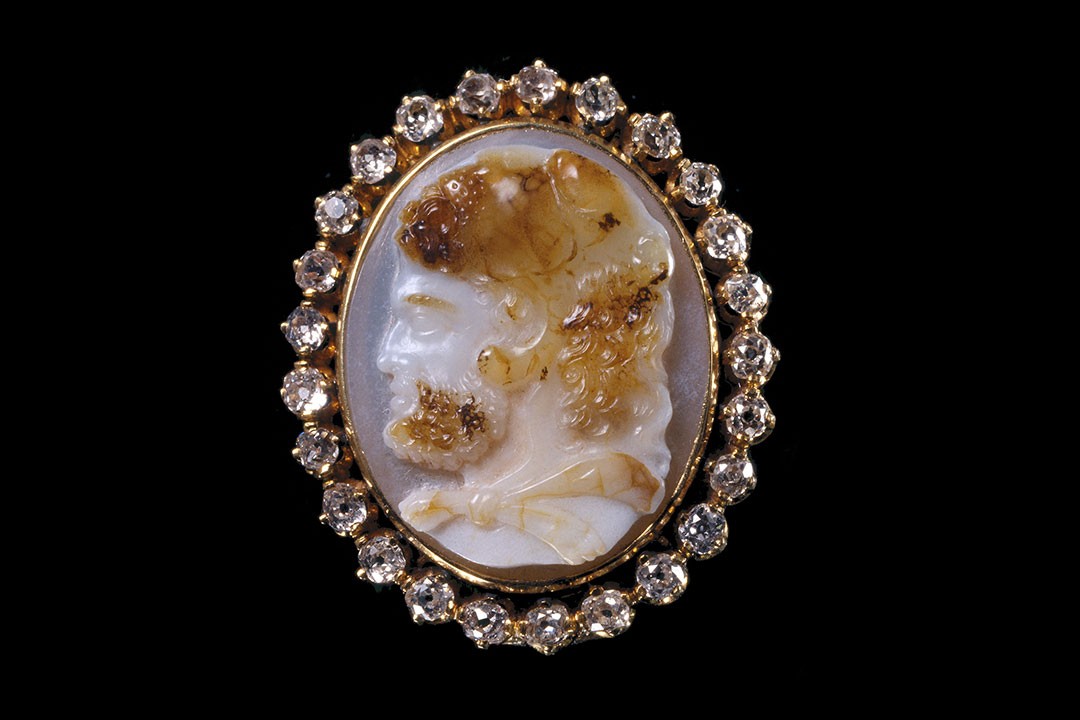KASHMIR BLUES
When I first started collecting coloured gemstones, I came across an extraordinary book by Richard W. Wise called ‘Secrets of the Gem Trade’. While there were many nuggets of knowledge [...]

“Cameos are my first love,” says Ida Faerber, who works alongside her father Thomas, at the Faerber Collection, Geneva. “They were my first discovery in the world of jewellery. I remember thinking how extraordinary it was to be able to tell a story out of stone, how amazing to create magnificent art from stone or shell, what imagination, what skill.”
The art of gem-engraving is one of the earliest of all art forms, reaching back to Mesopotamia, to the great civilisations of antiquity, when engraved cylinder seals were essential instruments for signing documents and sealing contracts. Cameos were a later development, traceable to the engraved scarabs of ancient Egypt, and blossoming in the Hellenistic age. Both cameos and intaglios (incised engravings) were highly prized, in ancient Greece and Rome and then again in the Renaissance with its revival of classical art and learning. A deep appreciation of gem-carving, as the noblest of art forms, as a highly elevated form of human artistic expression, was nurtured by great patrons of the arts and collectors, including Lorenzo dei Medici, who counted the 2nd century B.C carved hardstone cup, later known as the Farnese Tazza, as his most valuable treasure.
The art of gem-engraving was revived again with the wave of neo-classicism, 1760-1820, stimulated by archaeological discoveries and encouraged in particular by Napoleon, who modelled himself on the great Roman emperors. Napoleon had a passion bordering on obsession for engraved stones, especially ancient gems, and established a school of gem-engraving in Paris. He presented Empress Josephine and later Marie Louise with grandiose parures set throughout with cameos. Leading neo-classical cameo-carvers, including Pichler, Pistrucci, Morelli, Girometti, took to signing their work, to prevent them being passed off as ancient gems by unscrupulous dealers.
Another revival in the mid-to later19th century was fuelled by a fresh archaeological revival, focused on a mania for ancient gold jewels. Cameos by artists such as Luigi Saulini were set into gold, Etruscan-revival mounts by leading goldsmiths including Castellani of Rome.
The most prized cameos are those carved from hardstones, agates, onxy, sardonyx, in which the layers of the stone are used, with consummate skill and imagination, to bring subject to life, to tell a story, to introduce shading, perspective, to highlight minute details, for example to capture the diaphanous folds of a goddess’s robes or unruly, wispy curls of hair.
Later in the 19th century, as cameos became less cerebral and more widely popular, they were carved on a huge variety of materials, coral, ivory, tortoiseshell, lava but mostly on shell. Poised between archaeological-revival and romanticism, these later Victorian shell cameos were madly fashionable, often huge and elaborate, carved with mythological figures and scenes, including the Three Graces, cherubs, angels, Hercules, the head of Medusa, a chariot ascending to the heavens, or with profile portraits of contemporary figures, male and female, including Queen Victoria. Some were set with precious stones to create a cameo habillé. Other cameos still were carved in more precious materials, including emerald or opal. Ida Faerber recalls a 19th century cameo carved from black opal depicting a native American wearing an elaborate feathered headdress skilfully worked to make full use of the dramatic flashing colours of the stone.
Ida Faerber says she is endlessly fascinated by cameos, which are, she says, miniature sculptures of awe-inspiring artistry and craftsmanship that generate a powerful visceral and emotional response in her. “That emotional response is important; you have truly feel the emotion when you look at a cameo.” Yet cameos were also revered as amulets, or invocations, imbued with spiritual power, powers that were drawn from the stone by the skill of the carver in depicting particular subjects, a god or hero for example, whose own attributes, virtues or strength were believed to be transferred to the owner. She cites Renaissance bloodstone cameos, of religious subjects, in which the red depicted drops of blood and the green signified hope.
While early examples, ancient or Renaissance, continues Ida, are exceedingly rare today, good 19th century cameos of the quality on offer at GemGenève are still, she feels, “completely undervalued.” And, she adds, “Although they were more commercial, more mass-produced, later 19th century shell cameos can be very beautiful.”
At GemGenève, search out the cameos on offer at various antique jewellery dealers, The Faerber Collection, for example, and particularly New York-based dealers’ dealer, Shalom Bronstein, who has a special interest and love for cameos and engraved gems. He takes his cameos seriously: most of the select group he will bring to the show, he says, are early 19th century or mid-19th century, and all are stone cameos, which in his opinion are generally “several steps up” from Victorian shell cameos, although he adds it is possible to find some exceptionally fine shell examples. Overall, he says, “cameos are ridiculously inexpensive, in terms of man hours involved in engraving and carving, and in the artistic skills required. They represent incredible value.”
Ida Faerber finishes by saying that one other aspect of cameos she loves is the depth and complexity of the subject; there is always so much more to learn. “I’m enchanted by the magic of the cameo, the minute details, the dedication, the storytelling in stone. These skills are lost; it is an art from that cannot be repeated.”
Richa Goyal Sikritoday26 April 2019
When I first started collecting coloured gemstones, I came across an extraordinary book by Richard W. Wise called ‘Secrets of the Gem Trade’. While there were many nuggets of knowledge [...]